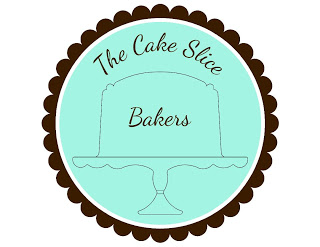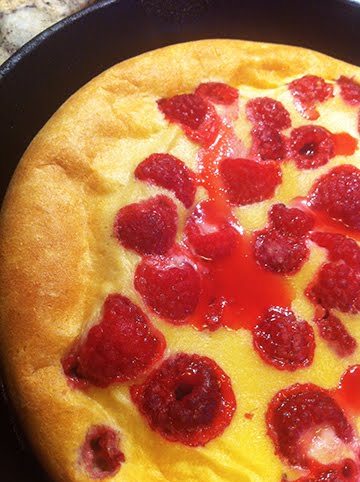
While we were in Seattle, I was reading an advice book written by various women. One wrote about a Weight Loss Soup that seemed very similar to the Weight Watchers One Point Soup that forms the basis for my basic go-to soup. Water or broth based soup can be a great aid for a weight loss program, one to promote good health, or one for comfort. A warm, steaming bowl of fragrant soup is so comforting on a cold December day. It can revive you after a stint in the stores finding that perfect, illusive gift. Best of all, it can be inexpensive and full of good nutrition AND be made ahead, so all you do is reheat it. A quick blast in the microwave and you have a bowl of goodness.
To start off with, you need a good sized pot. A little pot will be OK for a small batch, but then you have to do it all over again. Something that will hold between 8 and 12 cups of liquid is great. Just make sure it fits in your fridge. One with a lid is nice, too.
Next you'll need some ordinary yellow onions. Medium to large ones are great. Avoid ones with obvious mold or bruises. If you have room, get a half dozen. They keep for months in a cool, dark place and are essential in lots of great cold weather dishes.
To use in soup, peel off the papery skin, cut off the root end, cut in half. Use a sharp knife to cut through about 1/4 to 1/2 inch apart, then slice the same distance apart. This pretty much dices the onion. A few extra bits of chopping can dice any large pieces.
The illustration below shows how to do the first cuts. After that you just slice down perpendicular to those cuts.
Next you need some celery. Celery is an essential ingredient not only in many soups, but in my stuffing and in most Creole dishes, too. If you don't cook that way or snack on it (celery sticks with low fat peanut butter makes a quick snack), see if you can find a small (or half) version of a head of celery in the store.
To use in soup, wash a few ribs well, cut off the bottom where it attached to the head of celery, then run a knife down the middle of the rib. You can include the feathery leaves, well chopped, or not...it's a matter of taste. Slice the celery about 1/4 inch thick all down the rib. Repeat for the other rib (or two if you like celery).
Garlic can be optional, but I find it a great addition to most soups. You can keep a head of garlic, which looks like a flower bulb with papery white skin, in your cupboard. If you are a "if I have to mince garlic I'll never make soup" kind of person, buy some minced garlic in a jar to keep on hand in the fridge.
To use in soup, if you have a head of garlic, pull off one or two of the cloves - more if you really like garlic - remove the skin, and mince. To remove the skin, lay the garlic clove on a cutting board and smash down with the flat of a large knife (like a chef's knife). This will loosen the skin, so you can peel it right off. To mince the peeled garlic clove, lay it flay and run the knife through it in rows. Keep the knife slashed pretty close together. Turn is a bit and slash againat a 45 degree angle. Then make thin sliced across those slashes to make little squares. If there are any odd large bits, cut them to fine chop.
Broth is the real basis of a good soup. The best is the kind you make yourself. You can simmer a chicken or other poultry and use the liquid you simmered it in as broth (although usually a trip through cheesecloth or a fine mesh strainer is good to remove unwanted stuff once the simmmering is done), but I usually opt for ease by purchasing canned chicken broth. Plain water is also fine, but comes with no flavor, so you need to make sure to add plenty of flavor by carmelizing the veggies and adding enough herbs and spices.
Soup can take on lots of personalities, depending on what you include in the pot. Just like the kids story of Stone Soup, the character of the soup is improved by the addition of vegetables and legumes, herbs, spices, flavored oils, pieces of meat, fish, or poultry, pasta and/or tofu.
To start out, take you soup pot, add a few tablespoons of grapeseed oil, canola oil, olive oil, or butter. Grapeseed oil can be heated to a high heat level and not create carcinogens the way very hot olive oil can and it doesn't seem to burn like butter will. It's slower but, as an alternate to grapeseed oil, fine to use butter or the other oils and cook the first ingredients over a lower heat.
I like to saute' the onions, celery and garlic over medium-high heat for about 5 - 8 minutes, until the onion is slightly browned, especially on the edges, and transluscent. Often I'll put the onions in first, cook a couple of minutes, then add the celery and garlic, stir, then cook the rest of the way as slightly lower heat. If I'm using just water, I'll use olive oil, turn the heat to medium or medium-low, cook just the onions, stirring often, until they start to brown, then add the celery and garlic and cook another five minutes or so, still at the lower heat. This gets everything a nice medium brown color and that adds lots of flavor to the finished soup.
Once the onions, celery and garlic have cooked, add the broth or water - about 4 - 8 cups, depending on how much soup you want. Use a wooden spoon to scrape the browned bits from the sides and bottom of the pot...again for added flavor.
This is the basic soup base. From here you can go wild.
My usual veggie soup starts with the basic soup base, then I add a can of diced tomatoes in juice, or the equivalent in fresh, seeded and peeled tomatoes. I also add a cup of thinly sliced carrots, 5 or 6 red potatoes, cut in bite sized chunks, and a frozen boneless, skinless chicken breast. Cover the pot and turn low to simmer for about 10 minutes. Remove the chicken and keep simmering the soup until the potatoes are cooked. Add 1/4 cup chopped parsley, 1/4 teaspoon black pepper, about 1/2 teaspoon poultry seasoning, salt to taste. Dice up the simmered chicken and put it back in the pot. Throw in some (about 1/2 cup to 1 cup each) green beans, peas, corn, and/or spinach. Some zucchini whihc has been sliced in half lengthwise, then sliced is a nice addition, too. Simmer a few minutes, then taste for seasoning.
This soup will keep for 3 -4 days in the fridge. Just reheat and enjoy. A grating of good Parmesan cheese over the top just before serving is a wonderful addition.
There are tons of variations. Here are a few variations:
Ministrone: Take the basic soup and add a can of diced tomatoes. Add at least a cup of pasta. Add a can of cannelli or white beans, some Italian seasonings, and at least a cup of chopped chard, plus some green beans ands some sliced zucchini squash. This one really needs the Parmesan cheese. You can even add a Parmesan cheese rind when you add the broth or water. Tiny meatballs can also be added or some cooked, sliced Italian sausage. Italian flat beans instead of regular green beans is a nice change, too. Be sure to simmer this one until the pasta is cooked.
Chicken Noodle: Take the basic soup, using chicken broth for the liquid. Add 1/2 pound of egg noodles, the thin kind are usual, but fatter will work, too. Add 1/2 cup chopped parsley, a cup or so of diced, cooked chicken, 1 teaspoon dried thyme. Heat until the noodles are cooked. Taste for salt and pepper. Sliced mushrooms can be added when you add the noodles for a different take on this classic soup.
Spinach Soup: Remove the long stems from a 10 oz bag of fresh baby spinach, or similar amount of large leaf spinach. If needed, wash thoroughly. Chop the spinach and add to the basic soup, along with 1/4 teaspoon nutmeg. Cook briefly, about 4 minutes, just to cook the spinach quickly. Taste for salt and pepper. Process half of the soup at a time in a food processor, blender, or with a hand blender if you like a smoother soup. If you like a thicker soup, while the basic soup is cooking, in a separate pot, boil a couple large Idaho potatoes (russets) that you have cut into bite sized pieced. When potatoes are fork tender, drain, mash with potato masher or fork, then stir into the finished soup. Stir to mix. The mashed potatoes will thicken the Spinach Soup like a charm.
More variations will be coming later...imagine what you can do with rice, chicken and black beans; or with chilis, tomato, chicken and tortilla strips, etc.
 It is only recently, with the blessing of starter awaiting my creativity in the fridge, that I've really spent much time or thought on bread baking. The more I know, the more I realize that I don't know...always a promising start to a new hobby.
It is only recently, with the blessing of starter awaiting my creativity in the fridge, that I've really spent much time or thought on bread baking. The more I know, the more I realize that I don't know...always a promising start to a new hobby. It has over 400 recipes and more than 1800 photographs so it is my kind of book. There are recipes for breads, muffins, cakes, pies, tarts, and cookies.
It has over 400 recipes and more than 1800 photographs so it is my kind of book. There are recipes for breads, muffins, cakes, pies, tarts, and cookies. The only change I made was that I substituted a cup of my sourdough starter for the yeast, but then added 1/4 teaspoon of dry yeast to the milk mixture, just in case. I added the flour slowly and let it knead a long time in the KA mixer. Because my starter is on the wet side, I added about another 5 or 6 oz. of flour.
The only change I made was that I substituted a cup of my sourdough starter for the yeast, but then added 1/4 teaspoon of dry yeast to the milk mixture, just in case. I added the flour slowly and let it knead a long time in the KA mixer. Because my starter is on the wet side, I added about another 5 or 6 oz. of flour. The only change I made was that I substituted a cup of my sourdough starter for the yeast, but then added 1/4 teaspoon of dry yeast to the milk mixture, just in case. I added the flour slowly and let it knead a long time in the KA mixer. Because my starter is on the wet side, I added about another 5 or 6 oz. of flour.
The only change I made was that I substituted a cup of my sourdough starter for the yeast, but then added 1/4 teaspoon of dry yeast to the milk mixture, just in case. I added the flour slowly and let it knead a long time in the KA mixer. Because my starter is on the wet side, I added about another 5 or 6 oz. of flour.























































